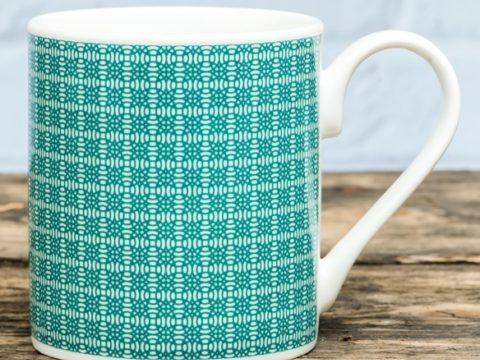Robert Dudley: Life Story
Chapter 2 : Rebellion
Northumberland hoped to marry his sons and daughters into the highest echelons of nobility, to increase the breadth of his influence. As part of Northumberland’s desire to placate those who had supported Protector Somerset, Robert’s brother, John, was married to Somerset’s daughter, Anne.
Shortly after, Robert married Amy Robsart. Despite her position as her father’s heir to three manors, it seems unlikely that Northumberland would have chosen Amy as his son’s wife – her birth was not on a par with that of a peer’s daughter, and his influential position in 1550 would have given him plenty of choice of daughters-in-law. We can therefore reasonably suppose that the marriage was made for love – or, at least desire.
Whatever the reason for the choice, it was given royal recognition. On 4th June 1550, Robert was first knighted by Edward VI, and then married to Amy at the royal palace of Richmond.
The wedding attracted the usual fun and games and King Edward noted in his journal that ‘there were certain gentlemen who did strive who should first take away a goose's head, which was hanged alive on two crossposts.’
There is no indication that Robert’s parents disapproved of the match. The marriage articles were carefully drawn up to give the couple an income, and there were complex clauses relating to the life-interest that Amy’s mother was to retain in the Robsart properties. Later grants of land to Robert and Amy, from Northumberland, suggest that the plan was for Robert to build up his influence in East Anglia – perhaps to replace the Howards (the 3rd Duke was languishing in the Tower) or perhaps as a counterbalance to Edward VI’s half-sister and heir, the Lady Mary, who had received a significant proportion of the old Howard lands, in the scramble for property that surrounded Henry VIII’s death.
Robert became Joint Steward of Castle Rising in 1550, became a Knight of the Shire (MP) the following year, and later joint Lord-Lieutenant of the county. In 1551, he became Master of the King’s Buckhounds and in 1552 was appointed as one of the six gentlemen of Edward VI’s Privy Chamber. He was also the official keeper of Somerset House, one of the properties owned by the Lady Elizabeth. As his influence, both in East Anglia and at court, grew, and Northumberland’s favour with the king showed no sign of abating, Robert was probably looking forward to a rapid advance at court.
In 1553, it became apparent that King Edward was unlikely to live to manhood. The young king feared that the succession of his legal heir, his half-sister, the Lady Mary, would unravel the Protestant legislation of his reign. Either of his own volition, or prompted by Northumberland, Edward looked for another solution. His preferred heir was his cousin, an equally zealous Protestant, Lady Jane Grey.
In the spring of 1553, Lady Jane became Robert’s sister-in-law when she was married to the youngest Dudley brother, Guilford, in a double ceremony in which her younger sister, Katherine Grey, married Henry Herbert, son of the Earl of Pembroke. As part of the same series of arrangements Robert’s sister, Katherine Dudley, was married to Henry Hastings, Earl of Huntingdon, later known as the Puritan Earl. Huntingdon was the grandson of Lady Margaret Pole, Countess of Salisbury and thus had a distant claim to the throne.
Edward died on 6th July 1533. The news was kept secret and Robert was sent at the head of a company of horses to either persuade or force the Lady Mary to come to London where she would, no doubt, have been imprisoned unless and until she had ceded her claims to Jane.
But Lady Mary had been forewarned and had diverted from her journey to London towards East Anglia where she was proclaimed as queen. Robert arrived at Mary’s house at Hunsdon to find that she had already departed. He gave chase but failed to catch up with her before she had reached her castle at Framlingham.
Northumberland set out to capture Mary, and Robert and his brother Ambrose were part of his militia. As they passed through the city of London, it became apparent that there was no support for Jane. By the time they reached Cambridge Northumberland became aware that there was no hope for a peaceful succession for Jane – to press forward would have risked civil war. Northumberland and his sons surrendered and were sent to the Tower of London.
Northumberland was executed before the end of August 1553, and Robert and his brothers were tried in January 1554 and condemned to death. The sentence was not carried out, and the brothers remained in the Tower. The Dudley brothers were kept in the Beauchamp Tower, where they passed many hours carving their names and badges into the stone walls. Whilst to be imprisoned in the Tower must have been deeply frightening and unpleasant, the actual conditions of their imprisonment were not harsh and Ambrose’s wife and Amy were allowed to visit.
Early the following year, Robert’s brother, Guilford, lost his head when Lady Jane’s father, the Duke of Suffolk, became embroiled in Wyatt’s Rebellion, another attempt to put oust Mary and replace her with either Jane or half-sister, Elizabeth. Lady Elizabeth herself was also sent to the Tower, suspected of involvement. It is possible that she and Robert may have seen each other from a distance and perhaps even exchanged messages but it is unlikely that they saw each other or were able to talk. Elizabeth was released to house arrest at Woodstock on 19th May 1554.
Lord Robert Dudley
Family Tree


